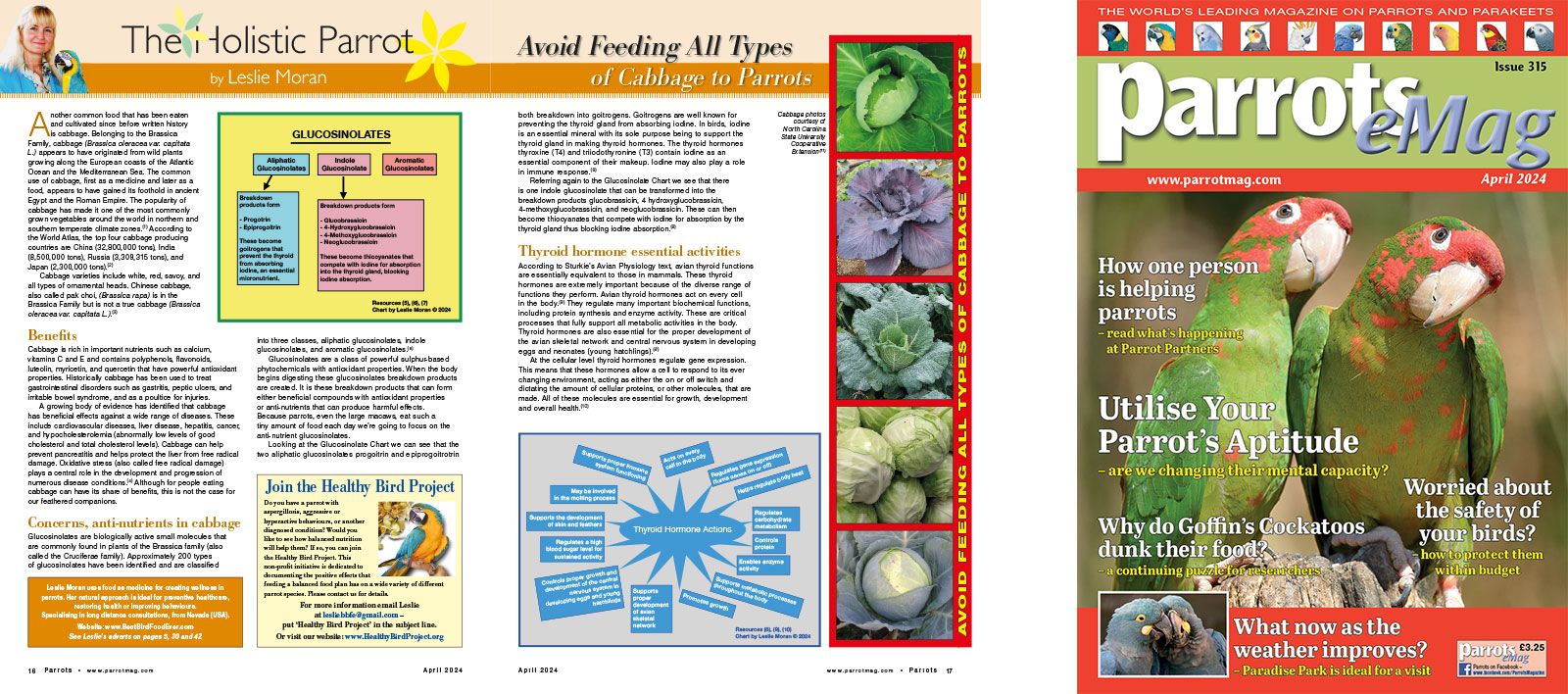
The Holistic Parrot by Leslie Moran
Another common food that has been eaten and cultivated since before written history is cabbage. Belonging to the Brassica Family, cabbage (Brassica oleracea var. capitata L.) appears to have originated from wild plants growing along the European coasts of the Atlantic Ocean and the Mediterranean Sea. The common use of cabbage, first as a medicine and later as a food, appears to have gained its foothold in ancient Egypt and the Roman Empire. The popularity of cabbage has made it one of the most commonly grown vegetables around the world in northern and southern temperate climate zones. According to the World Atlas, the top four cabbage producing countries are China (32,800,000 tons), India (8,500,000 tons), Russia (3,309,315 tons), and Japan (2,300,000 tons).
Cabbage varieties include white, red, savoy, and all types of ornamental heads. Chinese cabbage, also called pak choi, (Brassica rapa) is in the Brassica Family but is not a true cabbage (Brassica oleracea var. capitata L.).
Cabbage is rich in important nutrients such as calcium, vitamins C and E and contains polyphenols, flavonoids, luteolin, myricetin, and quercetin that have powerful antioxidant properties. Historically cabbage has been used to treat gastrointestinal disorders such as gastritis, peptic ulcers, and irritable bowel syndrome, and as a poultice for injuries.
